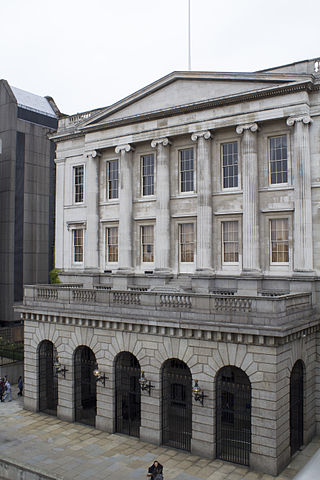
A livery company is a type of guild or professional association that originated in medieval times in London, England. Livery companies comprise London's ancient and modern trade associations and guilds, almost all of which are styled the "Worshipful Company of" their respective craft, trade or profession. There are 111 livery companies in total. They play a significant part in the life of the City of London, not least by providing charitable-giving and networking opportunities. Liverymen retain voting rights for the senior civic offices, such as the Lord Mayor, Sheriffs and Common Council of the City Corporation, London's ancient municipal authority with extensive local government powers.

The Worshipful Company of Grocers is one of the 111 livery companies of the City of London, ranking second in order of precedence.

The Worshipful Society of Apothecaries of London is one of the livery companies of the City of London. It is one of the largest livery companies and ranks 58th in their order of precedence.

The Worshipful Company of Fishmongers is one of the 111 livery companies of the City of London, being an incorporated guild of sellers of fish and seafood in the City. The Company ranks fourth in the order of precedence of City Livery Companies, thereby making it one of the Great Twelve City Livery Companies.

The Worshipful Company of Goldsmiths, is one of the Great Twelve Livery Companies of the City of London, headquartered at Goldsmiths' Hall, London EC2.

The Worshipful Company of Vintners, one of the Great Twelve City Livery Companies, retains close links with the wine trade.
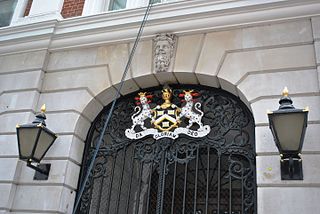
The Worshipful Company of Dyers is one of the Livery Companies of the City of London. The Dyers' Guild existed in the twelfth century; it received a Royal Charter in 1471. It originated as a trade association for members of the dyeing industry but is now mainly a charitable institution. Each year the company participates in the ceremony of Swan Upping along the River Thames.

The Worshipful Company of Ironmongers is one of the Great Twelve livery companies of the City of London, incorporated under a Royal Charter in 1463.

The Worshipful Company of Brewers is one of the ancient livery companies of the City of London.
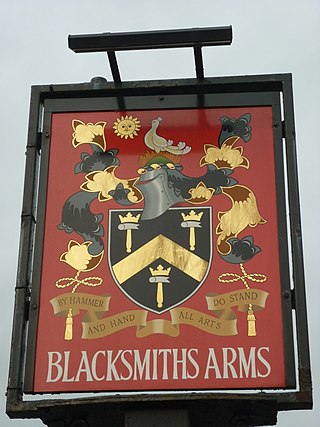
The Worshipful Company of Blacksmiths is one of the livery companies of the City of London. The organisation was first mentioned in a court record in 1299. A Royal Charter officially granting it the status of Company was granted in 1571. The Company originally had the right to set regulations and standards for blacksmiths in the City of London. However, the right eroded over time. By the end of the eighteenth century, little remained of the company's former powers and so the Company did not the renew the lease on its hall at expiration in 1785.
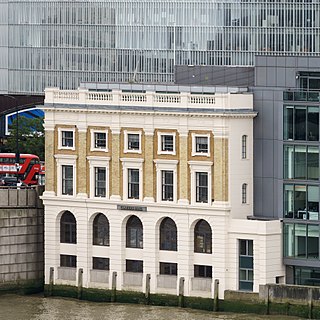
The Worshipful Company of Glaziers and Painters of Glass is one of the livery companies of the City of London. The Guild of Glaziers, or makers of Glass, the company's forerunner, existed as early as the fourteenth century. It received a royal charter of incorporation in 1638. It is no longer a trade association of glass craftsmen, instead existing, along with a majority of livery companies, as a charitable body.
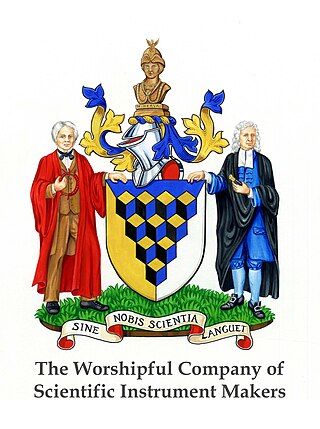
The Worshipful Company of Scientific Instrument Makers is one of the 111 livery companies of the City of London. It ranks 84th in the order of precedence for the livery companies.

King William Street is a street in the City of London, the historic nucleus and modern financial centre of London. It is a two-way street linking Lombard Street, at its northern end, with London Bridge, which marks the start of the start of the A3 route to Portsmouth.
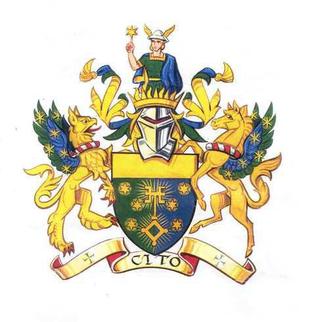
The Worshipful Company of Information Technologists, also known as the Information Technologists' Company, is one of the livery companies of the City of London. The company was granted livery status by the Court of Aldermen on 7 January 1992, becoming the 100th livery company. It received its Royal Charter on 17 June 2010 from Prince Edward.

Pietro Annigoni, OMRI was an Italian artist, portrait painter, fresco painter and medallist, best known for his painted portraits of Queen Elizabeth II. His work was in the Renaissance tradition, contrasting with the modernist style that prevailed in his time.

Apothecaries Hall is a scheduled monument at Black Friars Lane, London. It is the headquarters of the Worshipful Society of Apothecaries of London, one of the livery companies of the City of London. It is one of the largest livery companies and ranks 58th in their order of precedence. The building, originally part of the Dominican priory of Black Friars, was called Cobham House prior to its purchase by the society in 1632.

Sir Alan Colin Drake Yarrow, FCSI was Lord Mayor of London 2014–15. He is an investment banker, who has served as Chairman of the Chartered Institute for Securities & Investment (CISI) since 2009.
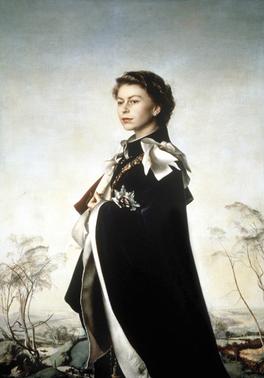
Pietro Annigoni completed a number of portraits of Queen Elizabeth II between 1954 and 1972. In 1955, he painted her for the Worshipful Company of Fishmongers and in 1969 for the National Portrait Gallery. The two portraits were united for the National Portrait Gallery's exhibition; The Queen: Art and Image, held to mark the Diamond Jubilee of Queen Elizabeth II in 2012. In 1972, Annigoni completed a circular drawing of the Queen and Prince Philip, Duke of Edinburgh to mark their silver wedding anniversary.
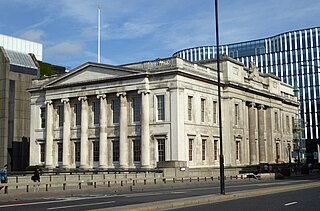
On 29 November 2019, five people were stabbed, two fatally, in Central London. The attacker, Usman Khan, had been released from prison in 2018 on licence after serving a sentence for terrorist offences.

Usman Khan, also known as Abu Saif, was a Pakistani-British Islamic terrorist and murderer who on 29 November 2019 murdered 2 people and wounded 3 others during an attack near London Bridge before being fatally shot by City of London Police after being subdued by civilians.




















